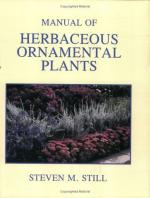|
This section contains 353 words (approx. 2 pages at 300 words per page) |
Ornamental plants are grown for use by the green industry and public for purposes such as landscaping for sport, and conservation. The green industries include commercial plant nurseries, flower growers, parks, and roadside and landscape plant installation and maintenance.
The primary use for these plants is not for food, fuel, fiber, or medicine. However, ornamental plants contribute significantly to the quality of life by acting as barriers to wind, providing cooling shade, reducing or eliminating erosion, cleaning the air and water of pollutants including dust and chemicals, reducing noise pollution, and providing food and habitat for wildlife while making both suburban and urban areas more beautiful. Their economic and emotional impact is significant.
Ornamental plants include perennial deciduous and evergreen shade trees, conifers, and shrubs grown in horticultural production by the commercial nursery industry. Ornamental plants also include herbaceous and woody indoor and outdoor landscape broadleaf plants, grasses, and palms produced by traditional floricultural and nursery techniques within greenhouses, shaded structures, and other environments significantly modified to favor healthy, rapid, and profitable plant growth.
Ornamentals include annual, biennial, or perennial plants. They may be field grown in native or amended soils and then harvested and marketed with native soils intact. This form of horticulture is generally referred to as "balled and burlapped" (B&B) plant production even though burlap may not be used in their harvest. They may also be harvested without soil and referred to as "bare root." The most popular method of growing ornamental plants is in soilless growing media within containers. Soilless growing media are most often natural organic materials such as peat or tree bark mixed with a mineral component such as sand or perlite.
 A number of rhododendron species and hybrids grow in the maritime climate at Broughton-in-Furness, Cumbria, England.
A number of rhododendron species and hybrids grow in the maritime climate at Broughton-in-Furness, Cumbria, England.
Ornamental plants comprise one of the economically and environmentally most important segments of American horticulture. U.S. Department of Agriculture farm income estimates from the production of greenhouse and nursery crops were $11 billion in 1997. California, Florida, Texas, and North Carolina were the top states producing ornamental plants.
See Also
Horticulture; Horticulturist; Landscape Architect; Orchidaceae; Propagation.
|
This section contains 353 words (approx. 2 pages at 300 words per page) |


